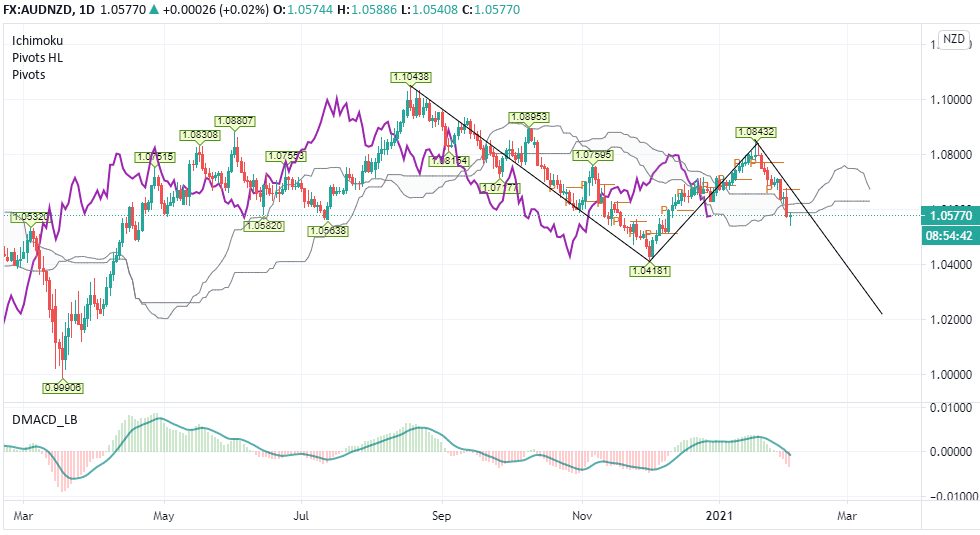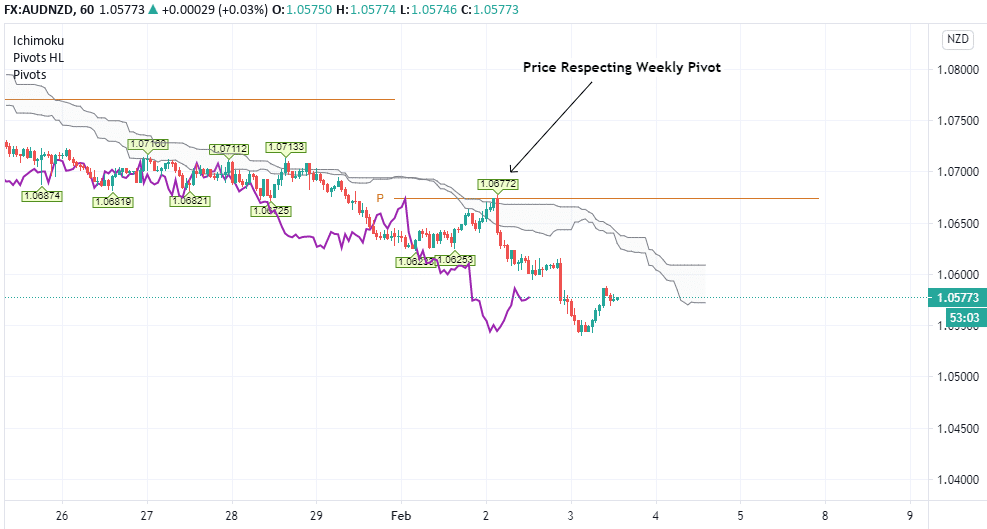- Trading
- Trading
- Markets
- Markets
- Products overview
- Forex
- Commodities
- Metals
- Indices
- Shares
- Cryptocurrencies
- Treasuries
- Platforms
- Platforms
- Platforms
- Platforms
- Platforms overview
- MetaTrader 4
- MetaTrader 5
- Education
- Education
- Education
- Education
- News & analysis
- Education Hub
- Economic calendar
- Help & support
- Help & support
- About
- Trading
- Trading
- Markets
- Markets
- Products overview
- Forex
- Commodities
- Metals
- Indices
- Shares
- Cryptocurrencies
- Treasuries
- Platforms
- Platforms
- Platforms
- Platforms
- Platforms overview
- MetaTrader 4
- MetaTrader 5
- Education
- Education
- Education
- Education
- News & analysis
- Education Hub
- Economic calendar
- Help & support
- Help & support
- About
- Home
- News & Analysis
- Forex
- AUDNZD – Kiwi Returning To The Status Quo
News & AnalysisAUDNZD – Daily
Despite the Australian Dollar having a strong rally towards the end of last year, it appears the New Zealand Dollar is once again regaining the upper hand against its counterpart. New Zealand is ticking many of the economic boxes of late, and from a fundamental point of view, it’s not hard to envisage a return of strength for the Kiwi currency. These boxes include a combination of recent policy updates such as the steering away from negative rates and also how New Zealand has successfully managed the global pandemic thus far.
Using the Ichimoku cloud indicator on the daily timeframe, we see an array of factors contributing to the current downtrend in motion. Firstly, both price action and the longer-term lagging span (purple line) are operating below the cloud, which paints an inherently bearish picture.
Next, the cloud’s thickness located above the current price suggests much resistance to the upside if challenged. That’s not to say it won’t fail, but it could cause problems for those looking to go long. We also see the MACD indicator maneuvering southwards with plenty of space to deepen into further bearish territory.
Overall, the longer-term outlook at this stage looks rather bleak for the Australian Dollar. Even shorter-term charts such as the hourly shown below, many indicators replicate the daily snapshot. Interestingly, the price has used the weekly pivot of 1.0673 as resistance, essentially rebounding from this level with pinpoint accuracy.
In terms of potential price targets, longer-term, the pair look set to re-test the previous low of 1.0418, where the AUDNZD began the last rally in December. Additionally, a DiNapoli calculation triangulating the swing highs/lows of 1.10438, 1.04181, and 1.08432 suggests 1.02175 as another possible target.
Should this theory come to fruition, it would bring AUDNZD back towards pre-pandemic levels. Given how well both New Zealand and Australia are dealing with the Covid-19 situation, it seems logical for the price to return to this region.
Sources: Go Markets, Meta Trader 5, TradingView, Bloomberg
The information provided is of general nature only and does not take into account your personal objectives, financial situations or needs. Before acting on any information provided, you should consider whether the information is suitable for you and your personal circumstances and if necessary, seek appropriate professional advice. All opinions, conclusions, forecasts or recommendations are reasonably held at the time of compilation but are subject to change without notice. Past performance is not an indication of future performance. Go Markets Pty Ltd, ABN 85 081 864 039, AFSL 254963 is a CFD issuer, and trading carries significant risks and is not suitable for everyone. You do not own or have any interest in the rights to the underlying assets. You should consider the appropriateness by reviewing our TMD, FSG, PDS and other CFD legal documents to ensure you understand the risks before you invest in CFDs. These documents are available here.
#Forex #ForexAnalysis #ForexBroker #ForexCharts #ForexMarket #ForexNews #ForexSignal #ForexTradingNext Article
The kiwi shooting star
By Luis Sebastian The Kiwi unemployment rate dropped to 4.9% from 5.3% in the quarter ending December 2020, Statistics New Zealand announced yesterday; it is worth noting some Economists had projected a rise to 5.6%. The Kiwi dollar (NZD) soared after the rate fell unexpectedly in the fourth quarter as the country boomed after a lengthy recessio...
February 4, 2021Read More >Previous Article
Wall Street vs. Main Street
It has been an eventful week over in the United States this week. Some of the major companies, including Microsoft, Apple, Facebook, and Tesla anno...
January 29, 2021Read More >Please share your location to continue.
Check our help guide for more info.

- Trading



